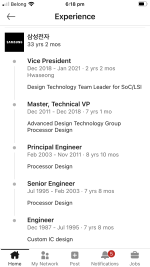wilzy123
Founding Member
Nice to see the latest Turing Award winner supporting neuromorphic accelerators.
Brief intro and then snip further down.

Jack Dongarra: A Not So Simple Matter of Software
For a few moments, the atmosphere was more Rock Concert than Supercomputing Conference with many members of a packed audience standing, cheering, and waving signs as Jack Dongarra took the stage to deliver the annual ACM Turing Award lecture at SC22.www.hpcwire.com
Jack Dongarra: A Not So Simple Matter of Software
By John Russell
November 16, 2022
For a few moments, the atmosphere was more Rock Concert than Supercomputing Conference with many members of a packed audience standing, cheering, and waving signs as Jack Dongarra took the stage to deliver the annual ACM Turing Award lecture at SC22. Few people are as deeply associated with evolution of HPC software or with the Top500 list that spotlights the fastest supercomputers in the world than Dongarra, who with Hans Meuer, and Erich Stromaier, created the Top500 in 1993. (The latest Top500 was unveiled on Monday at SC22.)
“I wasn’t expecting this. Wow,” said Dongarra, visibly moved. “I have to say it’s a tremendous honor to be the most recent recipient of the ACM A.M. Turing Award. An award like this couldn’t have come about without the help and support of many people over time.”

Considered the Nobel Prize of computer science, the ACM A.M. Turing Award, named for Alan Turing, also carries $1 million prize. Here’s brief excerpt of the ACM tribute to Dongarra:
Q&A turned up a couple of interesting discussion points. One question, not surprisingly, was around future architectures.
“Today, we have machines that are built on manycore plus GPUs. I would think that in the future, we would see that expand, [and] have other accelerators added to that collection. So think about adding an accelerator that does something specific for AI. Or think about adding an accelerator which does something like neuromorphic computing. We can add accelerators to the collection to help in solving our problems. Maybe quantum would be another accelerator – I don’t see quantum being its own compute,” said Dongarra.
The benefit, said Dongarra, is “that specific applications could draw on those components to get high performance or a user could dial up perhaps what mixture of accelerators they choose to have on their specific system, according to the applications. It’s about making sure that we have the hardware matching the applications that are intended to run on this machine and having the right mixture.”
Very cool!





